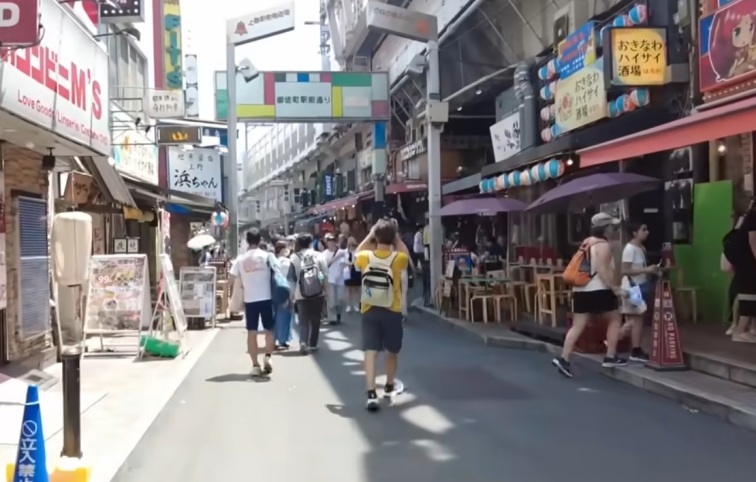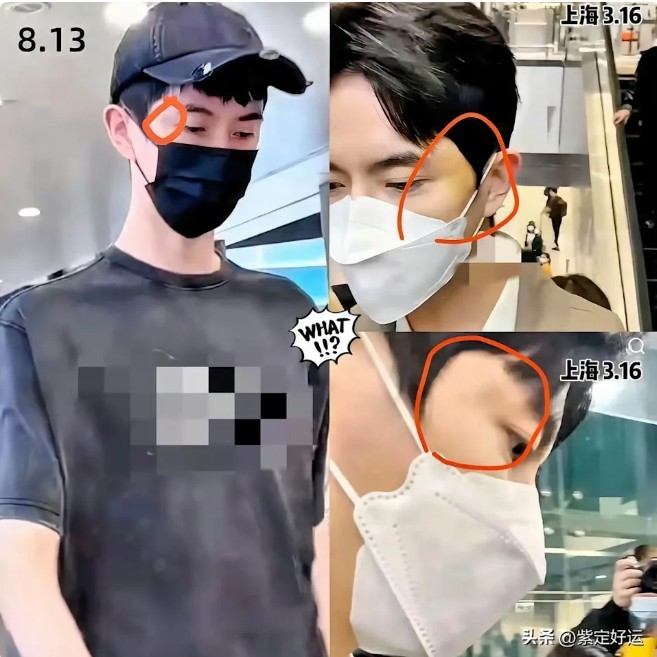The exterior of the United Nations Headquarters in New York. (September 24, 2025)
[People News] When a regime simultaneously experiences these five conditions—peasants collectively losing control + total fiscal collapse + international encirclement + the military losing combat effectiveness + the emperor losing control over the powerful elites—it almost enters an “irreversible final stage.” Comparing these five conditions with Xi Jinping’s current regime, you will find they all match perfectly.
On November 21, 2025, at the UN Human Rights Council, a joint statement issued by 15 countries—Albania, Australia, the Czech Republic, Estonia, Israel, Japan, Latvia, Lithuania, North Macedonia, Palau, Paraguay, San Marino, Ukraine, the United States, and the United Kingdom—hit Beijing’s glass heart like a heavy hammer.
The joint statement pointed directly to human rights abuses in Xinjiang, Hong Kong, Tibet, including arbitrary detention, forced labor, mass surveillance, and cultural eradication; it called for the release of political prisoners and urged the UN to promote accountability. The participation of allies such as Japan and Israel made Zhongnanhai’s “wolf warrior diplomacy” appear completely futile. This was not an isolated event, but the tip of the iceberg of global encirclement.
Looking back at Xi Jinping’s rule, what he fears most is not external enemies but internal collapse—the “final-stage” signs of a modern dynasty: peasants collectively losing control, total fiscal collapse, international encirclement, the military losing combat power, and the emperor losing control over the elites. When these five erupt at the same time, history tells us rescue is impossible. The irony is that the more Xi tightens his high-pressure stability maintenance, the more these fears follow him like a shadow—perfectly proving the old saying: What you fear comes to you.
First: Peasants collectively losing control—over 100 million displaced migrants wandering everywhere
Xi Jinping fears most the collective loss of control among the grassroots, because this would tear apart the CCP’s “myth of legitimacy.” But rural China in 2025 is already a powder keg. A massive wave of migrant workers returning home swept the country: reports say over 300 million migrant workers, due to economic downturn and the collapse of urban employment, flooded back into the countryside. Train stations and long-distance bus stations were packed, forming a “mass exodus back home.”
Even worse is what awaited them: expulsion and violent land seizures. Local authorities, under the banner of “rural revitalization,” forcibly demolished rural homes, expelled farmers from their land, and relocated them to remote “resettlement sites”—locations often far from farmland or water, with dreadful living conditions, triggering violent clashes.
A 2025 MIT study shows that this land seizure system has already rendered millions homeless; across the country, over 100 million people have become displaced migrants, wandering, begging, or taking black-market jobs. Protests erupted in Hainan, Chongqing, and other regions; farmers held banners shouting “Return our homes,” but were suppressed by police.
Xi’s “rural revitalization,” intended to stabilize the grassroots, backfired due to corrupt implementation—expulsion and demolition created over 100 million displaced people and ignited nationwide discontent. He feared peasant revolt; instead, peasants have already “collectively lost control.”
Second: Total fiscal collapse—‘State advances, private retreats’ devours private enterprise
The economy is the CCP’s lifeblood; Xi knows fiscal collapse triggers chain reactions. But China in 2025 is deeply sunk in a “debt quagmire.” The core culprit is Xi’s “state advances, private retreats” strategy: state-led SOE expansion squeezed out private enterprise, causing foreign capital to flee.
The U.S. State Department’s 2025 Investment Climate Report notes that foreign investment into China plunged 30%, with multinational companies accelerating “de-Chinafication” toward Vietnam, India, and other neighbors.
Exports shrank further: global supply chain restructuring caused China’s export volume to fall 15% year-on-year; manufacturing orders vanished; unemployment soared to 8%.
Housing prices collapsed, worsening the crisis: the real estate bubble burst completely, first-tier city prices were cut in half, developers like Evergrande and Country Garden went bankrupt, tens of millions of families lost their savings, and banks were buried in bad loans.
Worse still, private education, entertainment, and internet sectors “imploded”: regulatory storms caused mass closures of private schools; over half shut down. The entertainment industry, hit by harsh censorship, saw Tencent and ByteDance lose 40% of their market value, and content creators fled abroad. Internet giants were forced to “yield profits” to SOEs, killing innovation.
Xi’s “Common Prosperity,” intended to prevent inequality from sparking crisis, instead suffocated market vitality—foreign capital fled, exports slowed, housing collapsed, private industries crumbled. He feared economic collapse; instead, “total fiscal collapse” is already reality—a giant that should have soared now struggles for breath in a pit of debt.
Third: The thing Xi fears most—international encirclement
Xi’s biggest fear is global “encirclement,” because it exposes the hollowness of the “Great Rejuvenation.” The 15-nation joint statement is proof: it criticized human rights abuses, pointed to Hong Kong’s “bounty hunting” and transnational repression, and called on UN mechanisms for accountability.
Although 85 nations pushed back against “politicization,” the defection of key allies like Japan and Israel made Beijing’s “counter-sanctions law” look ridiculous.
The U.S. Congress passed the “Stop China and Russia Act,” adding more sanctions. The EU tightened export controls. China’s countermeasures (like the March 2025 “Anti-Foreign Sanctions Implementation Regulations”) only worsened its isolation.
Xi’s “wolf warrior strategy,” meant to intimidate, instead invited more encirclement: from the South China Sea to Xinjiang, the world now sees China as a “systemic threat.” He feared isolation; instead, “international encirclement” surged like a tide.
Fourth: Generals are unreliable—military loses combat capability
Xi sees the PLA as the “gun barrel,” but the 2025 purge has turned the military into a “paper tiger.” After the Fourth Plenum, nine senior generals were expelled; corruption investigations reached Taiwan theater experts; morale collapsed.
MERICS analysis shows this “second-wave purge” strengthened Xi’s grip but destroyed the PLA’s credibility and effectiveness. The Center for the National Interest warns that corruption stems from a lack of internal checks, severely weakening military reliability.
Xi’s anti-corruption was meant to cleanse the military, but excessive purges created a climate of fear: generals live in terror, and “loyalty” has become empty talk. He feared military betrayal; instead, the “military has lost combat power”—a once-mighty iron army is now a hollow shell.
Fifth: The powerful elites ‘vote with their feet’—sending children and wealth overseas
Throughout history, in every dynasty’s last stage, emperors feared elite backlash. In 2025, Xi is deeply trapped in this crisis: although the Fourth Plenum purge affirmed his dominance, it exposed instability within the Party.
More fatal is the reality that large numbers of CCP elites are transferring children and wealth abroad—an open secret.
A Hudson Institute report shows capital flight accelerating; wealthy elites emigrating with families, with over 7,800 high-net-worth individuals expected to leave, preferring the UK, UAE, and Switzerland.
Under “Common Prosperity,” elites publicly express support while secretly “voting with their feet”: children are sent to Harvard and Oxford (despite U.S. revoking visas for some CCP-linked students starting 2025); wealth flows out through Hong Kong and Dubai laundering channels, exceeding a trillion USD.
Shanghai’s “talent exodus” is especially severe: tech and finance elites flee with capital; New York even set up a “Chinese Entertainment Overseas Office” to receive exiled creators.
The Asia Society Policy Institute bluntly states this is a “great migration escaping Xi’s China Dream,” hollowing out innovation and shaking Party loyalty.
Xi’s “loyalty purge,” meant to consolidate control, instead dug his own grave: elites appear compliant but are inwardly disloyal. He feared losing control; instead, he is already “losing control over the elites.”
Six: Comparison with neighbors—what keeps Xi awake at night?
Xi’s fears extend beyond internal collapse to the “opposite examples” nearby. Taiwan, Japan, Indonesia, South Korea, Singapore, India, Thailand, Malaysia, the Philippines, and even Bangladesh—these Asian economies surged in 2025: IMF projections show Asia-Pacific growth at 4.5%, Southeast Asia at 5.1%, thanks to open trade, political stability, and democratic reforms.
The IMF praised their AI and manufacturing transitions; Japan leads China in this race; South Korea and Singapore follow closely. Indonesia, benefiting from democratization, attracts foreign investment and avoids debt traps; India grows 6.6% and ranks 3rd globally in FDI; Thailand, Malaysia, and the Philippines see double-digit FDI growth in semiconductors and renewable energy; Bangladesh, after the 2024 student revolution, revived democracy and accelerated recovery in 2025.
These nations prove: transitioning from authoritarianism to hybrid governance can defuse “final-stage” crises—protecting peasant rights, diversifying the economy, professionalizing the military, enabling elite turnover, integrating internationally.
In contrast, China’s high-pressure model backfires: Japan’s involvement in the 15-nation statement is evidence of this “regional awakening.”
Xi fears China repeating the fate of the Soviet Union; instead, the success of his neighbors reflects his own failures like a mirror—the path to reform is right next door, yet he clings to a “dynastic dream,” turning his fears into reality.
The truth is brutally clear: when all five final-stage signs appear together, Xi’s fate is already sealed. His ultimate end will resemble the dictators of Rome’s Caesar, the Soviet Union’s Brezhnev, Bangladesh’s Sheikh Hasina, Iraq’s Saddam Hussein, Romania’s Nicolae Ceaușescu, and Uganda’s Idi Amin—who all perished by refusing reform.
Xi’s “China Dream,” originally meant to avoid such disaster, is accelerating the CCP’s collapse due to his backward actions and stubbornness. The 15-nation statement is not the end but a warning: the world has awakened; internally, China is already out of control. What he fears comes to him—not fate, but the consequence of Xi’s own actions.
Xi’s death knell has sounded; the countdown to the regime’s end has begun. Dear readers, let us count down together for the arrival of a free China!
(Source: Author’s X account)
△











News magazine bootstrap themes!
I like this themes, fast loading and look profesional
Thank you Carlos!
You're welcome!
Please support me with give positive rating!
Yes Sure!